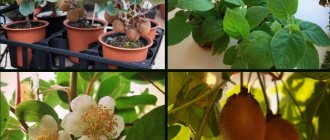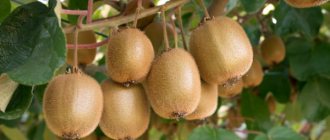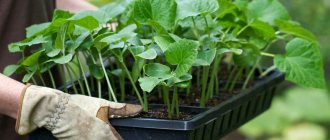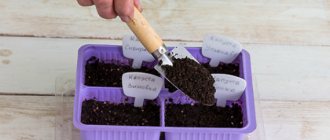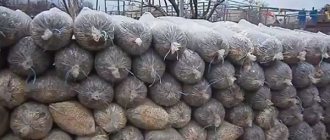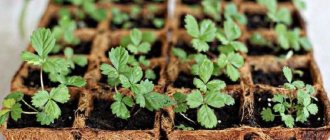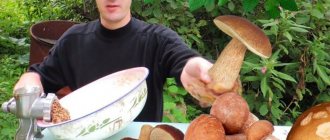Growing pepino at home is not a difficult task, but rather unusual. The seeds have already appeared on sale, but there is little information. So domestic gardeners are trying to master all the intricacies of growing pepino on their own, and then share their experience on forums. Meanwhile, conditions, for example, in the Krasnodar Territory and the Urals are different, so ridiculous mistakes are made. But the culture is simple, there are simply rules, deviating from which it is impossible to teach the harvest at home.
Sowing with picking
The picking method follows this scheme:
- The container is filled with loose soil, which is processed beforehand.
- Pepino seeds are placed on the surface and sprinkled with a thin layer of soil.
- The contents of the container are moistened, and the container itself is covered with a transparent film and placed in a warm place (25-28 degrees).
In a week you will see the first shoots. After the seedlings have three leaves, they can be planted in separate containers until they reach 7-8 leaves. New containers also need to be covered with film.
Description of pepino
Pepino: what kind of plant is this? People who are far from vegetable growing simply eat delicious fruits and do not ask such a difficult question. Let's try to understand the characteristics of this plant. Paslenov. The South American melon pear is native to Peru. There it grows as an evergreen shrub. Due to its impressive size and woody shoots, the bush looks more like a tree. Pepino plant has the following features:
- the leaf blade is dense and simple in structure and resembles a pepper leaf;
- the bush is spreading due to the abundance of shoots;
- in appearance it looks like a potato, only larger in size;
- inflorescence - a raceme on which potato-type white flowers with bright stripes are located;
- pepino gains weight of 150-750 g;
- color, size and shape depend on the variety.
Unripe pepino fruits are eaten, but in taste they are closer to cucumber or zucchini. When growing mature specimens, the taste of melon is expressed in combination with a melon-nutmeg aroma. The melon pear lives up to its name, having an internal structure like its namesake. The fleshy walls, 4-5 cm thick, appear as yellow flesh when cut. In the center of the fruit-vegetable is the seed chamber, which contains few or no seeds.
Ideally, pepino is not a fruit: botanists classify the melon pear as a berry. Considering their belonging to the family. Cooks have classified nightshade exotics as vegetables.
Preparation of mother plants
The fruits on the plants are still ripening, and you should already take care of growing mother material for the next season. We begin to grow queen cells from plant stepsons in mid-August so that by the end of the growing season they have a well-developed root system.
Plants can be prepared for overwintering in different ways:
- Grow young plants from shoots rooted in June-July. Shorten the main stems, leaving only a few lower shoots. The root system of the plants has already formed; it is not depleted by fruiting. With proper care, plants survive the winter safely.
- Grow plants from stepchildren in the second half of August. Stepchildren grown in September, with early cooling in the fall, do not have time to form into a stronger plant. It is better to plant the stepchildren next to the mother plants, where they will be protected from hot rays and provided with moisture.
- Grow plants from the shoots of rooted shoots. To do this, you need to leave one shoot of the lower tier on the bush, give it the opportunity to grow, then tilt it and pin it to the soil. When it comes into contact with moist soil, more than a dozen stepsons grow on the shoot and they already have a root system. All that remains is to cut the stem and plant the finished plants.
Before planting, cut off 1 - 2 lower leaves and plant the plant in a container slightly deeper than the removed leaves to form additional roots. Leave 5-7 leaves on the above-ground part of the stepson, from the sheaths of which new shoots will grow, forming a compact plant.
Care
Let's figure out how to properly care for pepino after transplanting the seedlings to a permanent place. The Consuelo variety is the most unpretentious; it tolerates relative shade and drought, but the most favorable conditions for it are the same as those created for tomatoes:
- preferably fertile soils with good aeration,
- acidity – neutral,
- do not allow an excess of nitrogen so that pepino does not “fatten”,
- for digging it is necessary to add manure that has rotted and phosphorus-potassium fertilizers,
- foliar feeding is carried out once a decade, starting from the eighth day after planting in the soil,
- you can add drugs that give an immuno- and growth-stimulating effect,
- water moderately as the soil dries,
- watering is increased only during fruit ripening, but avoiding waterlogging of the soil, diseases of the bushes and cracking of the fruits,
- To protect the soil from drying out and weeds, it can be mulched. For example, sawdust,
- The greenhouse is ventilated quite often, this promotes better pollination of plants.
When does pepino bloom, the timing of fruit ripening
Melon pear begins to bloom 45-70 days after emergence from the seeds, and fruits appear after a period of 2-3 months. The formation of ovaries occurs in the spring (from March to May), as well as in the autumn (from August to October).
Pepino pollinates on its own, but for a more successful process, the bushes are shaken, accelerating the process of self-pollination when growing exotics. When a vegetable turns orange with purple stripes, this indicates the technical ripeness phase.
You can remove unripe vegetables that are ready to ripen in a cool room, wrapped in paper. They reach consumer ripeness in 1-2 months. Overripe pepino fruits lose their taste.
Harvesting
If the seeds are sown in November-December, then the fruits gradually set in May, and harvesting is planned for August. Pepino fruits and vegetables ripen at different times during cultivation, so harvesting is carried out gradually. For a number of reasons, pepino is capable of shedding ovaries and young “cucumbers,” so you should not expect large harvests.
Fruiting can also occur in winter if nightshade crops obtained from seeds are grown for many years. Then the pepino fruits are formed in August, and the harvest occurs in October-November.
How to eat pepino fruit
Residents of countries where nightshade grows eat it fresh, like a pear, removing the peel and core. They cut the fruit into slices and enjoy the juicy, buttery pulp that tastes like melon. Grown in tropical conditions, the fruits ripen fully, acquiring their characteristic flavor shades.
In New Zealand, there is a different approach to pepino: the fruit is added to dishes with meat and fish, and sweet sauces and dessert dishes are created. Melon pear jam is interesting due to its unusual flavor range. Pepino is added to the compote assorted, combined with different fruits and berries. The fruits gel due to the pectins in the composition, so any desserts turn out thick and viscous.
An ancient plant, traveling around the planet, reached our country. And domestic gardeners did not miss the opportunity to grow a strange fruit. Despite the difficulties of cultivation, the melon pear with its unusual taste has found a place in the wide open spaces of Russia.
Use
The taste is reminiscent of pear and melon. The fruit is cut in half, seeds and skin are removed. Can be eaten raw. This fruit makes excellent jam and compote.
In cooking
Pepino is widely used in cooking. Many different dishes are prepared from the fruits, but most often these are desserts. The fruit can be used as a filling for various baked goods, and it can also be placed in ice cream, jelly, mousses, etc. In addition, in some countries sauces and soups are prepared from the pulp, as well as a side dish that is served with fish, meat and seafood.
In addition, the fruits can be dried, frozen and canned. When unripe, fruits are pickled like cucumbers. Ripe fruits are used to make jams, preserves and various drinks. In general, judging by the reviews of pepino, this fruit is very popular in the cuisines of the countries where it grows.
Diseases and pests
Pepino is susceptible to all the diseases and pests that affect nightshade crops, but it also has its own problems:
- the plant can destroy the Colorado potato beetle;
- pepino is susceptible to spider mites, aphids and whiteflies;
- Seedlings that are over-watered often have a black leg;
- overwatering of mature plants causes various rots;
- With a lack of copper, late blight develops.
Pepino should be inspected regularly and, if necessary, treated with appropriate fungicides or insecticides. Before transplanting into a pot, spraying is necessary. If problems began after pepino was brought into the house, the fungicides used are the same as in open ground; it is recommended to choose Actelik from insecticides.
Harvesting
As soon as the fruit becomes covered with a purple pattern, it must be removed. Store in a cool, dark place at a temperature of 10-15. In such conditions, the fruit is well stored for up to 4 months.
In conclusion, I would like to say about the benefits of this fruit. It is rich in various vitamins and contains only 80 calories! Therefore, do not be afraid of difficulties. You just need to take and grow this amazing plant. And if you follow all the recommendations, it will be easy and you will enjoy it!
Melon pear varieties adapted for cultivation in Russia
The breeders have achieved 25 varieties of melon pear. The most famous of them are Gold, Valencia, Favorite, Consuelo, Ramses. In central Russia, Consuelo and Ramses are suitable for growing, the seeds of which are offered by the famous.
Pepino Consuelo
Characteristics of Consuelo:
- forms a fruiting, spreading bush up to 1.5 m;
- 120 days pass from the moment of planting the seedlings to the ripening of the vegetable;
- the egg-shaped fruit weighs 420-580 g;
- lemon yellow color combined with purple stripes;
- When cut, the flesh is honey-colored;
- the taste is sweet and sour with hints of melon aroma.
Pepino Ramses
Features of the Ramses variety;
- the bush grows from 1 to 1.5 m;
- maturity period - 110 days when grown by seedlings;
- the fruit is orange-yellowish in color;
- the cone-shaped shape ends with a sharp tip;
- weight – 400-480 g;
- The pulp is sweet, light yellow.
When grown from seed, pepino sometimes differs in external characteristics, not being an exact copy of the mother plant. Seeds that are in one package may have external distinctive features, fruits with different tastes and shapes.
Room content
Keeping this peculiar plant at home or placing it, for example, on a balcony partially or completely protected from the weather becomes much less risky. This method of breeding is especially popular in the East, where pepino is a widespread and beloved fruit. There, similar flora can be seen growing in indoor pots, decorating verandas and entwining balconies.
At home, under particularly favorable conditions, many manage to grow a bush that is very attractive in appearance, complete in everything, and also fruitful. It reaches a height of up to 1 m. Its great decoration is its very large leaves. They most often have the shape of a pointed oval and look very decorative. This impression is maximally enhanced by the fruits, especially when the entire plant is covered with them.
With skillful care, they seem very appetizing and vaguely resemble ripe pears. If you cut them, they delight the eye with their juiciness and attractive yellow, almost honey-like flesh. True, in some varieties it is pinkish-brown. By the way, as for the varieties of this southern exotic, you can grow much more of them in the favorable bliss of your home than on the street. And this is quite natural. Let's look briefly at the main important points of home growing.
- Despite the fact that pepino came to us from the fertile south, stuffiness and heat do not have a very good effect on this plant. It grows and bears fruit much better in relative coolness.
- But if it is too cold, the fruits will be unripe and small. This divisibility is a huge headache for owners who have to adapt to their capricious green pet and find the right balance, constantly monitoring its well-being.
- The best place for Pepino is on a southern (at least approximately) windowsill, where he will be guaranteed to receive a sufficient amount of beneficial light. But if the plant does not like something in the conditions of its maintenance, even fruits that have already set can be simply discarded.
- An important point in home breeding is monitoring successful pollination, without which fruiting is impossible. In the garden the bees take care of this, but indoors their duties have to be performed by the gardener. However, this is not too difficult - just gently shake the bush at the height of its flowering. This helps the pollen spread.
- But the most important work lies ahead in preserving large inflorescences. Some of them have to be tied up so that they don’t break off under their own weight.
- Pruning is also important. The best option is to trim the crown to resemble a tree. Specimens that are too bushy usually develop worse.
Beneficial features
It is worth noting that pepino is not only a tasty fruit, but also very healthy. It contains a lot of ascorbic acid, iron, carotene, B vitamins and. It is also rich in healthy sugar, which is well absorbed by the body. All this gives the right to classify pepino as a dietary product. Nowadays, interest in pepino is being revived; not so long ago, special varieties “Ramses” and “Consuelo” adapted to Russian conditions were created.
Propagation by cuttings
A gardener who has been growing this plant for many years can share how to grow pepino using cuttings, since melon pears are most often grown using cuttings. They take root well, have all the varietal characteristics, and begin to bloom and bear fruit earlier than bushes grown from seeds. To obtain cuttings, in the fall the bushes are cut by a third, dug up and transplanted into containers with a volume of at least ten liters. Containers with plants are brought into the greenhouse. The temperature in it is maintained at 80C and practically not watered.
At the end of winter, the temperature in the greenhouse is warmed up to 16⁰C, and the plants themselves begin to be actively watered and fed. The resulting buds are cut off, and the stepsons are separated and transplanted into a light substrate. It is best to transplant the stepchildren into a separate room and maintain the humidity there at 90%.
Pepino bears fruit from early March to mid-May. Later, even with abundant flowering, there are no fruits. Most likely, this feature is associated with overheating in the daytime, and with the length of daylight hours, because in the homeland of the melon pear it does not last longer than 14 hours.
How to plant pepino at home
When obtaining fruits and vegetables at home, you should remember that exotic plants stop growth processes at +14C. Melon pear does not respond well to sudden changes in temperature, so the best way to grow it is at home on a windowsill, on a glassed-in loggia or in a greenhouse.
Planting pepino causes a lot of controversy. Botanists recommend growing exotic crops using cuttings. But transportation in a parcel from the nursery may end in failure, and cuttings are not widely sold. Gardeners continue to use seeds in bags, which do not always satisfy them with germination and growth rate.
Sowing pepino seeds
How to plant pepino seeds? When growing seeds, pay attention to several important points:
- Pepino seeds do not have a high germination rate: only 30-50% of seedlings are born. Up to 5 seeds are packaged in a bag, so it is advisable to purchase at least a couple of packages for a chance of success in germinating the seeds.
- Sowing of seeds is carried out at the end of November - beginning of December. Such early dates are associated with the fall of flowers and fruits when grown in conditions of long daylight hours and high temperatures, which occur in mid-summer.
- Spring planting with seeds is possible and pepino seedlings will sprout well. But with subsequent cultivation, single fruits will set. The ovaries are formed at the end of August, but the short growing season of the middle zone does not allow the melon pear to gain the required size and ripeness.
In winter greenhouses, gardens and greenhouses, pepino is able to bear fruit for a long time and bear fruit in the winter months. Short daylight hours and even temperature conditions provide this opportunity.
The main nuances of planting melon pear seeds:
- the seeds are laid out on the surface of the soil and covered with film;
- observe the temperature regime - +25-+28C;
- install additional lighting with a phytolamp up to 16 hours a day;
- pick seedlings from seeds when the 3rd leaf appears;
- after the development of 6-8 leaves, transfer to a larger container.
The seeds hatch within a month. Melon pear grows slowly in the initial stages of cultivation. To enhance life processes, fertilizers for Solanaceae are applied to pepino seedlings, uniform watering is monitored, and the temperature is raised.
Growing from cuttings
During cultivation, melon pears form stepsons that are suitable for further rooting. In this way it is possible to obtain a small “plantation” of young pepino. Cuttings and stepchildren quickly adapt and take root, catching up in growth with the mother plant. To make the roots form faster, the stepsons are placed in water for several days.
In winter, pepino melon pear grows in apartment conditions. This is not necessary for harvesting, but for cuttings in the spring. A high-quality specimen will provide first-class material for further reproduction.
Interesting Facts
Pepino is a low-calorie fruit. 100 g of product contains only 80 kcal. This feature will be appreciated by people who suffer from diets, but want sweets.
Melon pear is also called fairy pear. She is credited with many mythical powers. Thus, in ancient times, an unusual fruit was associated with the apple from Eden, which Eve ate. He was credited with healing powers.
Be sure to read:
Apricot kernels - healing kernels
Pepino is 92% water. For this reason, the fruit helps restore water balance in a matter of minutes.

